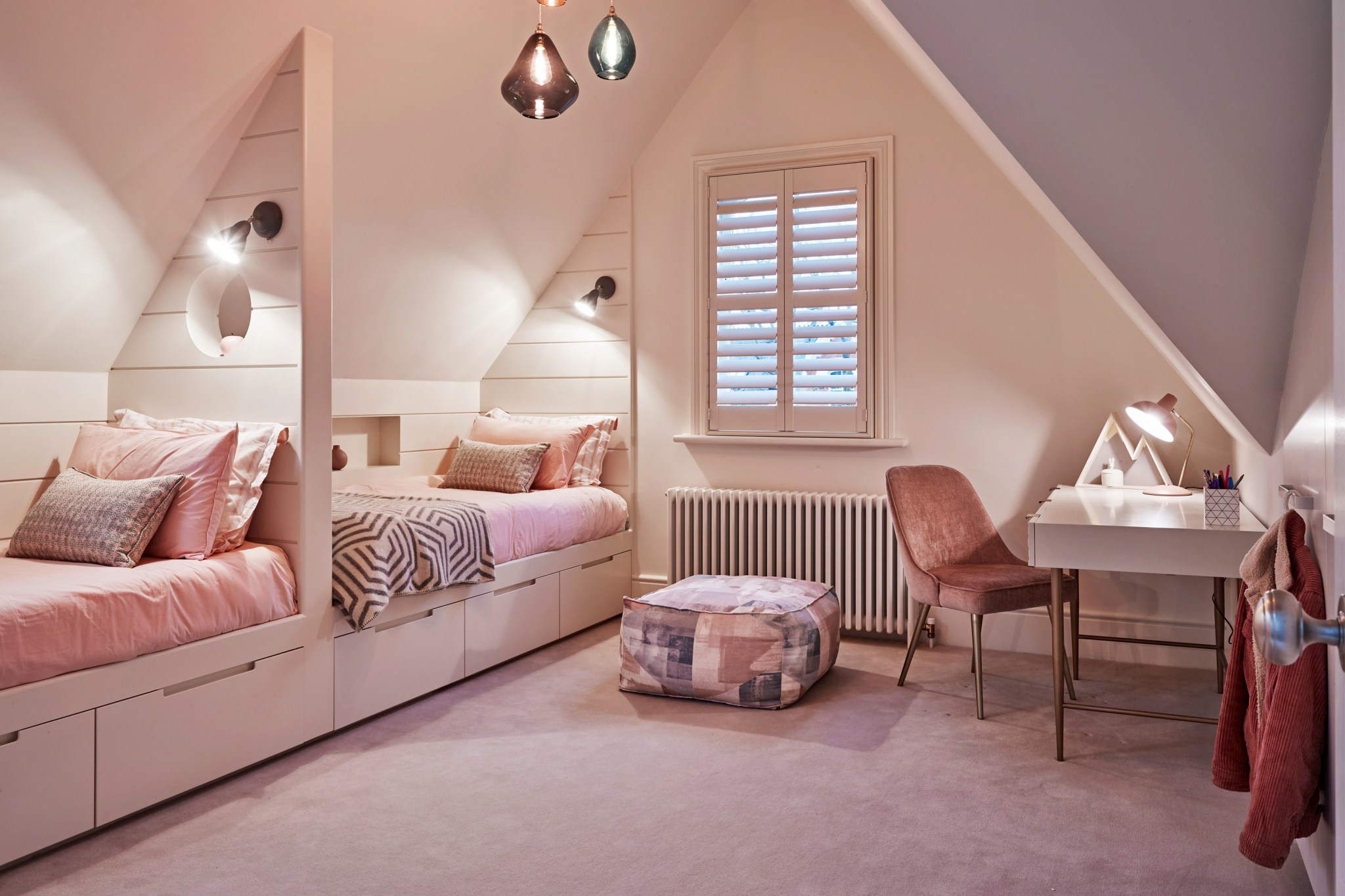An attic bedroom (or home office or other functional space) reclaims an area previously devoted to high school yearbooks and nesting sparrows. Optimizing every bit of livable space is especially important now, with some homeowners delaying a move for financial reasons. Another plus: Repurposing the space under your roof also avoids many zoning and easement concerns — common chores when adding onto a house. Here's some guidance about the cost to finish attic space.
Attic Renovation Cost: $100,000
Converting an attic to a living area yields a healthy return on your investment. According to the "Remodeling Impact Report" from the National Association of REALTORS®, an attic living space conversion costs an average $100,000 and returns 75% of its value if you decide to sell your house.
Homeowners who were surveyed for the report and undertook an attic conversion have no regrets. The project gets a joy score of 10 out of 10, a rating based on consumers' opinion that they were happy or satisfied with the project.
But just because adding livable space under your rafters is a smart money move, it may not be practical or even doable. To determine if it's right for you, consider:
- Building codes
- Support structures
- Electrical, HVAC, and plumbing systems
- Access
4 Cost Considerations When Converting Your Attic to Living Space
Review Building Codes Before You Convert Your Attic
Although homeowners often view building codes as obstacles, the real missions of codes are safety and durability. Because local codes vary, your building inspector can provide a list of applicable codes and required inspections for your new room.
- Ceiling codes: Generally 7 feet 6 inches high over a minimum floor area of 70 square feet. If your attic is shorter than required by code, you won’t be able to remodel it into living space.
- Joist codes: Ask an architect or structural engineer if your attic floor joists meet local codes and can support the additional weight of a remodeled space. Also ask if the rafters can support drywall, lighting, electrical, plumbing, and HVAC system components. Consultation costs an average $350 to $800.
- Egress codes: If you're converting to a bedroom, regular bedroom egress codes typically require at least two exits — a doorway and usually a window. An attic bedroom requires both a window and a staircase to the level beneath. Having an escape ladder in clear view is always a good idea.
Structural Changes to Your Attic Will Drive Cost
The structural framing beneath your roof — rafters or trusses — will determine if you can add livable space and what it might look like.
Rafters, internal beams extending from the peak of the roof to its eaves, provide a center open space that you can readily remodel.
Trusses, W-shaped framing that supports the roof, make things harder. To achieve the attic room you want, you might have to cut through, shore up, and otherwise alter the very structures that keep your roof over your head. It may not be practical. Consult a structural engineer and/or a licensed architect to determine if modifying trusses is a good idea.
Finished Attics Require Wiring, Plumbing, and HVAC
- Electrical: Consult a licensed electrician to determine if your electric panel has room for additional breakers and can handle the increased load of an attic room. If your system can handle the additional demands, running wires to the attic is relatively simple.
- Plumbing: If you're adding a small bathroom to your new room, cut costs by locating the bathroom close to the main stack — large pipes that carry wastewater to your sewer or septic tank. This reduces the length of pipe you’ll run between sink-shower-toilet drains and the stack.
- HVAC: An HVAC specialist will tell you if your forced air blower can move enough air to both heat and cool your new attic room. If it doesn’t, electric baseboard heating and a window air conditioner may suffice. Be sure your electrician knows your heating and cooling plans to determine the total electrical requirements of your new room.
Building Access Points to Your Attic
If your converted room will be a bedroom, it will require a standard staircase to meet code; a ladder is insufficient. Adding a staircase will take up space in a room below the attic, so consider converting a closet. You may be able to regain that storage space by using space under the new staircase.
Staircases with straight runs are easiest to construct but take up the most area, just over 40 square feet. Depending on materials and finishing touches, such as newel posts and hardware, costs can range from $2,000 to $5,000.
Spiral staircases take up the least space but are typically more expensive. Prices for a wood or metal-wood staircase kit ranges from $1,500 to $4,900; installation ranges from $600 to $1,200.
If you’re short on inside space, exterior access — a staircase outside the house — may be a solution. Check with your zoning department, which may interpret an outside staircase as a sign of a multiunit dwelling and not meet neighborhood zoning requirements.
How Much Does Finishing Your Attic Provide in Resale Value?
Converting an attic to a living area provides $75,000 in cost recovery, which is 75% of the $100,000 average expense.
How to Find Contractors to Convert Your Attic
If you need help to find an experienced contractor who has worked on attics, consult a REALTOR®.
